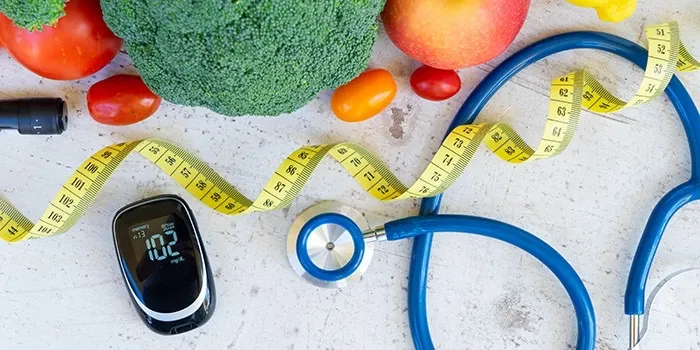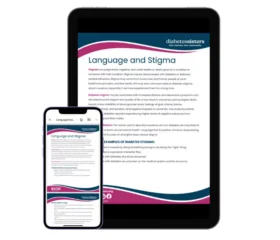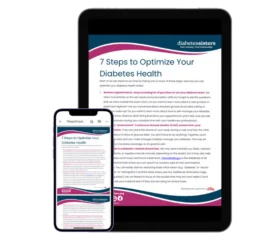Prediabetes – Now What?

Contributor: Tom Lang
Let’s start with the good news: a prediabetes diagnosis does not always mean a diabetes diagnosis will follow. Prediabetes is simply a condition in which blood glucose is elevated but still below the threshold for a diabetes diagnosis. It requires a medical diagnosis based on lab tests and should be treated with the guidance of your medical team. They may suggest changes to help bring your blood sugar levels back in range and increase your overall health.
Nine things to discuss with your medical team after a prediabetes diagnosis:
(Always consult with your healthcare provider before you make any significant changes to your lifestyle or if you have specific health concerns.)
- Nutritional guidance: Focus on balanced, nutritious meals with lots of low glycemic and low carb vegetables, lean (mostly plant-based) proteins, small amounts of healthy fats (from nuts, seeds, avocadoes), low glycemic fruit and berries, plus whole grains. Avoid, or limit, sugary and processed foods and drinks with added sugar.
- Exercise and activity: Try brisk walking, jogging, cycling, or any activity you enjoy, for at least 30 minutes a day at a moderate intensity level or 15 minutes a day of vigorous exercise. TIP: Short activity sessions spread throughout the day can be as effective as one long exercise session followed by hours of sitting. Even one-minute breaks to walk outdoors or upstairs or do squats near your desk helps!
- Maintaining a healthy weight: Even a small weight loss may increase insulin sensitivity and decrease blood glucose levels.
- Avoid smoking, vaping, and excess alcohol consumption: These habits can have a negative impact on your overall health.
- Manage chronic stress: It can contribute to insulin resistance and raise blood glucose levels. Try deep breathing, yoga, meditation, relaxing music, or any calming activity to lower your stress levels.
- Monitor your blood sugar regularly: Checking your glucose as advised by your healthcare provider can help you see which foods spike your blood sugars and the progress you are making.
- Keep your medical appointments: Your healthcare providers can help you to monitor your health and provide advice and support.
- Get enough sleep: Lack of restful sleep can negatively affect blood sugar levels and increase diabetes risk.
- Ger education and support: Learn about the Centers for Disease Control (CDC) National Diabetes Prevention Program. For support, look for a diabetes prevention support group (often available through your local hospital) or work with a diabetes educator or nutritionist to stay informed, motivated, and accountable.
The Centers for Disease Control (CDC) National Diabetes Prevention Program is often recommended to help lower the risk of developing diabetes. The program includes:
- Working with a trained coach to make realistic, permanent lifestyle changes.
- Learning to eat healthfully and add more physical activity into your day easily.
- Learning to manage stress, stay motivated, and solve problems that can slow progress.
- Getting support from people with similar goals and challenges.
Are there foods I should avoid if I have prediabetes?
The short answer is processed foods! Most foods with a long list of ingredients have added sugars, fat, sodium, and various preservatives and chemicals that can damage your health. Eating foods as close to their natural state is almost always better. For example, try brown rice rather than processed white rice.
Foods to avoid or limit include:
- Sweets (pastries, cookies, cake, candy, and others)
- Refined carbohydrates (white bread, pasta, crackers, potato chips, sweetened breakfast cereals)
- Snack bars and many (so-called) protein bars
- Flavored yogurt
- Fried foods
- Fatty meats
- Late-night snacks
Learn more with this list of 27 Foods to Avoid If You Are Prediabetic.
What healthy foods should I eat?
- Cruciferous (cabbage family) vegetables such as kale, broccoli, cauliflower, arugula, bok choy, and Brussels sprouts
- Low glycemic fruits such as apples, apricots, grapefruit, and berries.
- Beans and legumes, including fresh or frozen green beans, any dried beans, lentils, and chickpeas. TIP: Canned beans and legumes often contain too much sodium and additives.
- Whole grains like brown rice, barley, rolled oats, and quinoa.
- Low carbohydrate foods
- Olive oil instead of unhealthy oils. TIP: Virgin sesame oil is good for high-temperature cooking.
Some examples of healthy, lifelong eating habits are the Mediterranean Diet, the DASH diet, and the Blue Zones lifestyles.
By taking action now to live a healthy, fulfilling lifestyle, you may lower your risk of prediabetes becoming diabetes, while improving your physical and mental health. You got this!
Tom Lang has worked as a research assistant at the pharmaceutical giant Hoechst in Germany and at The Albert Einstein College of Medicine in New York. Trained as a biologist, he lives on the west coast with his wife, Cate, and their rescued dog, Te amo. Tom has coached over 1,000 women and men with prediabetes and diabetes and has helped two family members with diabetes.
Written by





